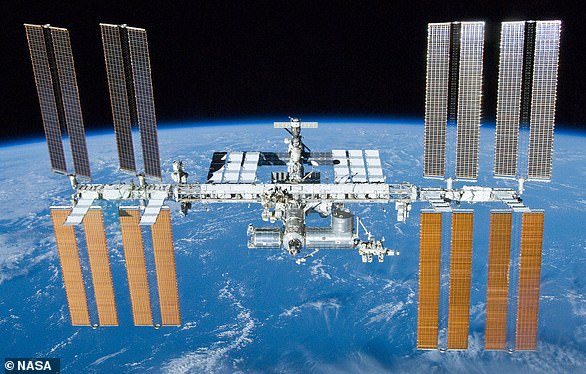It is not the first time that the International Space Station has suffered a leak.
A module on the Russian side of the orbital laboratory, called Zvezda, is leaking air through a 3-foot hole, NASA confirmed.
Fortunately, because the module has been isolated from the rest of the space station, there is no danger to the seven astronauts on board.
The aging space station, which floats in low Earth orbit at an altitude of 410 kilometers, will be decommissioned in 2030.
It follows several gas and coolant leaks from the ISS in recent years, including one from a mysterious hole allegedly made deliberately.
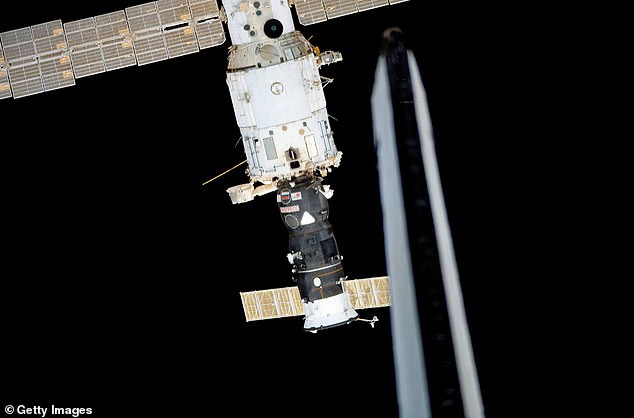
A module on the Russian side of the orbital laboratory, called Zvezda, is leaking air through a one-meter hole, NASA confirmed. The Russian freighter Progress 21 is seen docked at Zvezda in the center of this photo.
The leak was revealed by ISS program director Joel Montalbano during a live press conference this week at the Kennedy Space Center in Florida.
“I would say that area is about a meter long,” Montalbano said.
‘We’ve been watching this for a while; this area has had some leaks; in fact, we have repaired a couple of cracks in that part of the module.’
“We are working with our Russian colleagues on the next step.”
He added that it does not affect operations or crew safety, but it is “something that everyone needs to take into account.”
The different modules of the space station, similar to the different rooms in a building, are managed by five space agencies: NASA (USA), Roscosmos (Russia), JAXA (Japan), ESA (Europe) and CSA (Canada). ).
Because the ISS is separated into hermetic modules, the Russian-owned and leaking one, called Zvezda, can be sealed.
“When we close that hatch, the rest of the space station, the rest of the Russian modules, the rest of the American modules, European modules, Japanese modules, everything will be solid,” Montalbano said.
In its own statement, the Russian space agency Roscosmos confirmed the leak and said that none of the crew is in danger.
“In fact, specialists have detected an air leak on board the ISS,” the Russian space agency Roscosmos said in a statement.
“There is no threat to the crew members or the station itself.”
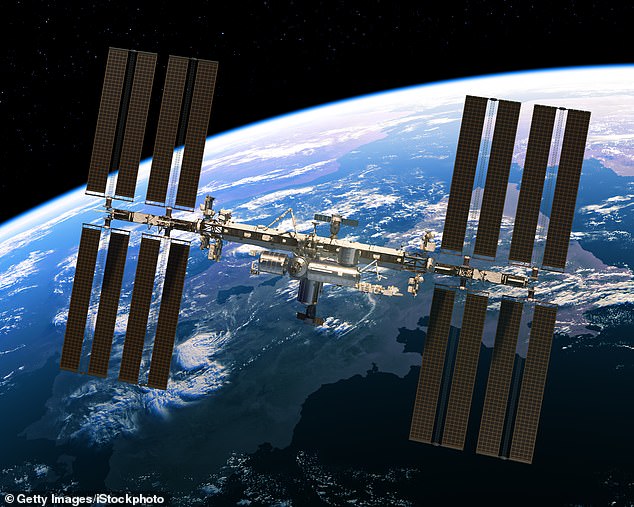

The ISS has been constantly occupied by astronauts since November 2000, but due to structural fatigue it must be decommissioned before 2030.
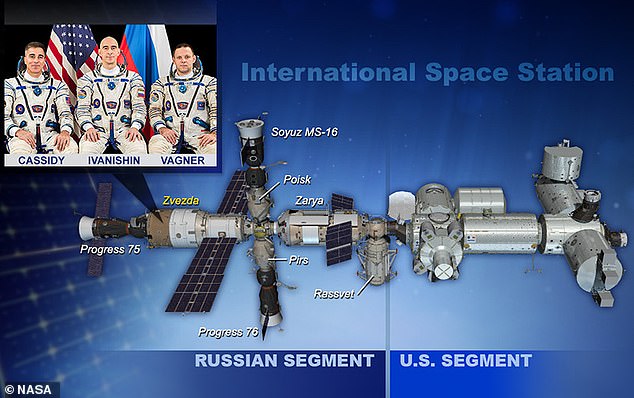

The ISS is divided into two main sections, the Russian Orbital Segment (ROS) and the American Orbital Segment (USOS). The inset photo shows three former inhabitants of the space station.
The Zvezda module is a key part of the Russian half of the station, providing oxygen and drinking water to the segment.
It also houses CO2 scrubbers that eliminate the gas exhaled by the inhabitants and houses bedrooms, bathrooms and dining rooms for Russian cosmonauts.
This is not the first time a leak has emerged from the Zvezda module, which was sent into space to dock with other components of the ISS in July 2000.
NASA officials first detected air coming from the space station in September 2019 before making it public the following year.
Only later was the leak identified as coming from the Zvezda module and attempts were made to repair it, although it is unclear if they were successful.
It is possible that this new leak is coming from the same hole; MailOnline has contacted NASA for more information.
This is due to a leak of vital coolant from the ISS last year, described as serious but not threatening the lives of the astronauts on board.
In 2018, the space station crew repaired another hole that caused a pressure leak on the ISS.
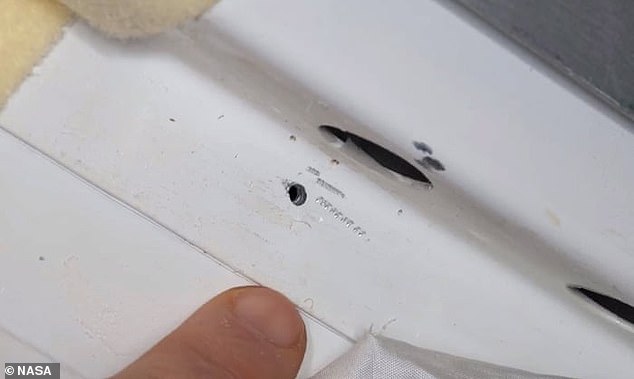

In August 2018, astronauts rushed to fix a hole (pictured) that had appeared in the outer wall of the Soyuz capsule at the orbital laboratory. Its origins remain a mystery
Former Roscosmos Director General Dmitry Rogozin said the hole was not due to a manufacturing defect and suggested it was probably made by hand.
In response, NASA said in a statement that this conclusion “does not necessarily mean that the hole was created intentionally or with malicious intent.”
The exact cause of the breach was thought to be a botched repair job by an engineer who punctured the side of the spacecraft.
However, some leveled accusations of subterfuge and deliberate sabotage.
NASA plans to send four more astronauts to the ISS on Saturday (March 2) aboard SpaceX’s Crew Dragon spacecraft.
Meanwhile, four other ISS crew members who have been there since August 2023 will return to Earth later this month.

